Exercising Without the Eating Disorder
The year is 2013, and I’m playing Just Dance for the third time in a day. Because it’s the weekend, I haven’t walked to school and back, so that means a third session is necessary. That’s how I think of exercise – necessary, required, in order to make up for the food I’ve eaten and burn off anything and everything I eat.
Flash forward seven years, to my second year at university. I am again playing Just Dance, but this time I’m crying with laughter, a little tipsy, playing a game with my housemates with no thought of calories burnt or repaying for food I’ve eaten. I’m exercising, but I’m also having fun.
*
In 2013, at the height of my eating disorder, I would panic if I wasn’t able to exercise. I was fixed on a routine, one I stuck to because I knew how many calories it burnt and how long it took to complete. If my parents or brother wanted to use the console at the time when I used it, I’d be on edge, unable to focus on anything else other than when I’d be able to get my session in, and how much delaying or moving my time would affect my weight and the amount of calories I could burn. My whole day would revolve around my ability to exercise. I couldn’t go anywhere with friends after school, or I’d miss my pre-dinner session. When travelling to visit family, being sat in the car felt like torture; once we got there, the only thing that allowed me to eat was that we went on long walks across the beach.
I was lucky, in a way, because I forced to stop exercising when I got too ill. Lucky because this meant I didn’t have to try and reduce exercise myself – I had no choice, which meant that the eating disorder had no choice. When I started getting better, though, I was given the opportunity to reintroduce exercise at home and through PE at school.
My first attempt to reintroduce exercise was a disaster, one that I think ultimately contributed to my relapse. At school, I was once again doing exercise that I didn’t enjoy; netball, gymnastics, or dance fitness. I was invited to an after school gym group for girls who weren’t showing as much interest in PE, which was a huge trigger for my eating disorder and caused me to take up going to the gym, something which I absolutely hated. I wasn’t exercising for fun, I was exercising because I was being told I had to, and that was enough to bring the eating disorder thoughts back.
By 2015, I was physically and mentally better than I had been when I started my recovery, but my relationship with exercise was still incredibly unhealthy. I still exercised to make up for what I ate; exercise was the only way to make eating tolerable, so I didn’t have to sit with the guilt and shame my eating disorder forced onto me.
Stopping exercising again was a last resort, but was becoming increasingly likely, until in June I received compulsive-exercise-specific CBT support. The aims of the support weren’t to get me to stop exercising all together, but to help me build a better and healthier relationship with exercise – one where I exercised because I wanted to, not because I needed to. I started to break down my unhealthy relationship with exercise by identifying the rules I had around it, challenging their necessity, and creating new, healthy rules to follow instead.
“I must exercise after each meal” became “I must not exercise unless I’ve checked in with myself first”. “I have to exercise every day” turned into “I should only exercise when I feel up for it”. I still follow so many of those healthy rules today. I check in with myself before I exercise, check why I want to exercise and how my body feels. If I’m having an urge to change the way my body looks, if I’m feeling too tired or not up to it, I stop myself and do something else instead.
There are so many great, healthy reasons to exercise: it boosts your mood, gives you energy, is a great way to socialise, and helps to clear your head. Keeping hold of these reasons is so important when you try to reintroduce exercising after an eating disorder. Find a new reason to exercise, and make sure that whenever you’re exercising, that’s what you’re doing it for.
For me, my main reason is always to have fun, to enjoy myself. When I’m out walking with my family, dancing with my friends, or bouldering (a sport I actually like!), I’m happy, and that’s not because I’m listening to the eating disorder, but because I’m listening to myself.

Contributed by Rebecca Thomas,
First Steps ED Specialist Support Officer


